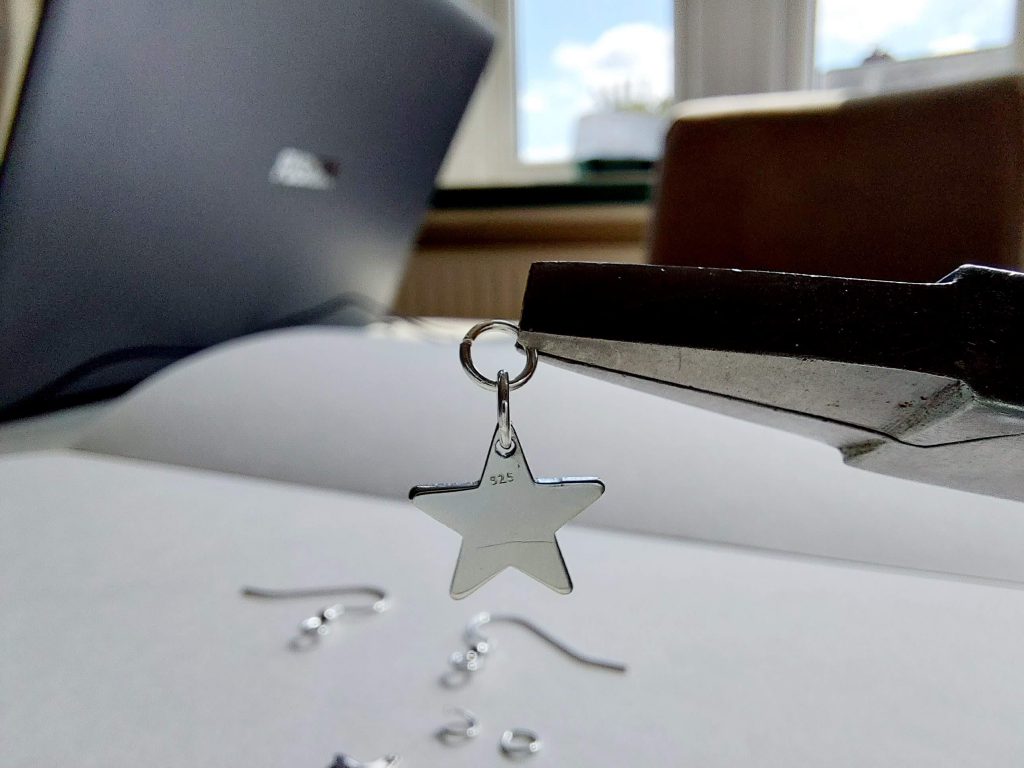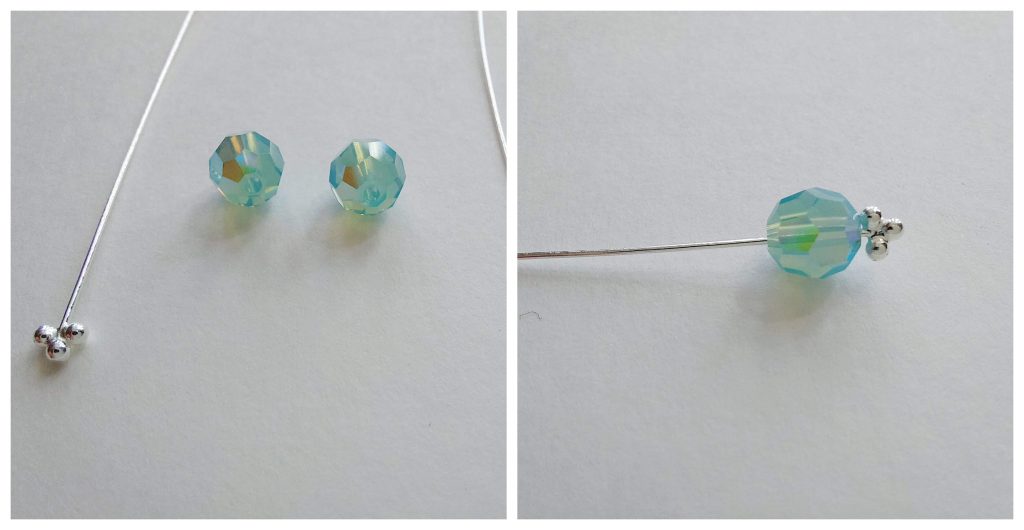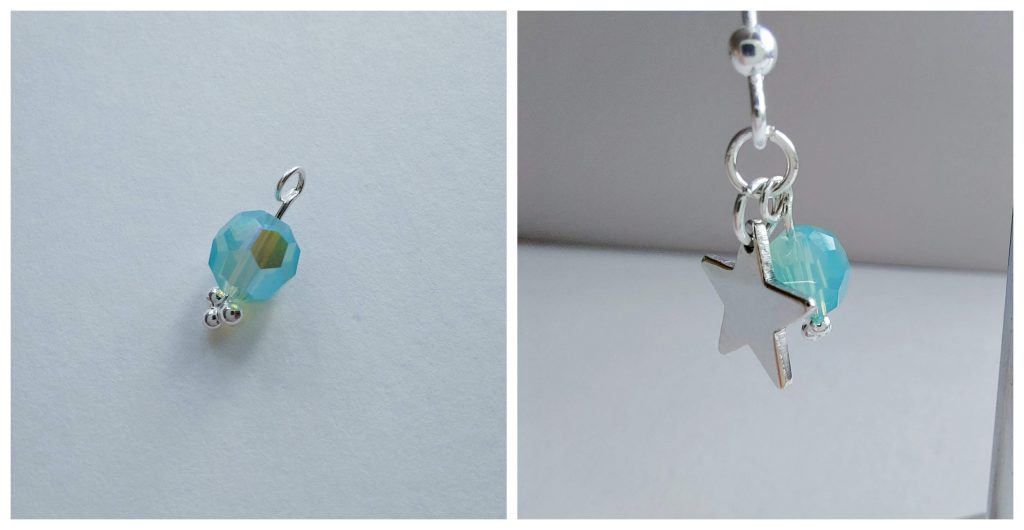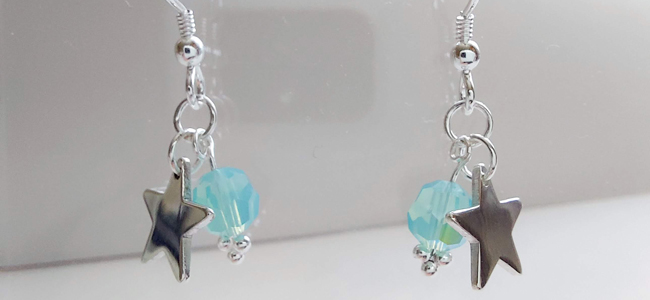How to make earrings
Create something quick and quirky like these charm earrings
The idea behind these charm earrings is to suspend two different charms independently from one ear wire to provide interest, colour and movement. The design creates a casual look which can be customised in a myriad of different ways. Anything with a ring can be suspended from an ear wire, so the sky really is the limit with this design. Try hoop earrings with charms for a statement look or try interchangeable earring charms to match with any other jewellery creations.

Step One

The first thing to do is to lay out the components to make charm number one. For this you will need two ear wires, two stars and four jump rings.
Note: The star earring charms for jewellery making come beautifully polished and are individually wrapped to protect the surface from becoming scratched. Keep this in mind when handling them and try to ensure they are not left on any hard surfaces which might cause unsightly marks.
Step Two

The jump rings can now be attached to the star. Take one jump ring gently in the jaws of your flat pliers and twist open to reveal a gap. The end of the ring can now be pushed through the hole in the star.
Loop the open end through the 2nd jump ring and twist to close. (4mm jump rings are thin enough to manipulate with just one pair of pliers and your fingers.)
Note: The star charms have hallmarks on one side. Ensure this is positioned to the rear of the design when hooking onto the ear wire. If you make a mistake, simply open up the jump ring and turn the charm around.
Step Three

Next, twist open the newly added jump ring, loop through the ring at the base of the ear wire and twist to close. You should now have one front facing star earring. Repeat the process again to create a second matching star earring
Step Four

Now to add the second charm. Lay out two beads and two head pins, side by side. Slide the bead onto the head pin, right down to the base where the decorative balls are.
Step Five

Using the round nosed pliers, grasp the wire approximately 3mm from the top of the bead and bend at a right angle. Reposition the round pliers to grasp the wire just beyond the bend you’ve made, and then loop the wire back over the top of the pliers using your fingers, to make a link.
Note: When making the loop, try to imagine you are making a little coil and loop the wire round as closely and as tightly as you can. This process can be quite fiddly, but practice makes perfect.
Step Six

Once you are happy with the loop, snip off the end of the wire using the side cutters and squeeze in the sharp end with the pliers so it doesn’t stick out. Now is the time to perfect the position of the loop so that it is central, and flatten down any kinks you may have.
Open up the front facing (middle) jump ring using the flat pliers, slide the bead component over the end and twist to close. Remember when you repeat this process with the second earring to mirror the position of the bead. For example, if the bead sits to the right of the star on the first earring, make sure it sits to the left of the star on the second one.
Note: There are three possible positions that the bead could be placed in; the loop on the base of the ear wire, the jump ring in the middle or the jump ring which goes through the star. All will achieve a slightly different effect.
Repeat the process to produce a second bead component, thus completing the earrings.

We want to see what you have been making! Share your creations with us on social media, tagging in Cooksongold on Facebook, Twitter and Instagram. Need to upgrade your tools? Check out our selection of expert jewellery tools. Want to learn more about silver jewellery making, then let our guide teach everything you need to know.

Joanna Varney
Joanna has worked in and around the jewellery industry for well over 20 years. She has designed and created her own pieces as a designer maker, as well as working in jewellery retail on a much larger scale, producing designs and NPD for some of the UK’s largest high street retailers

